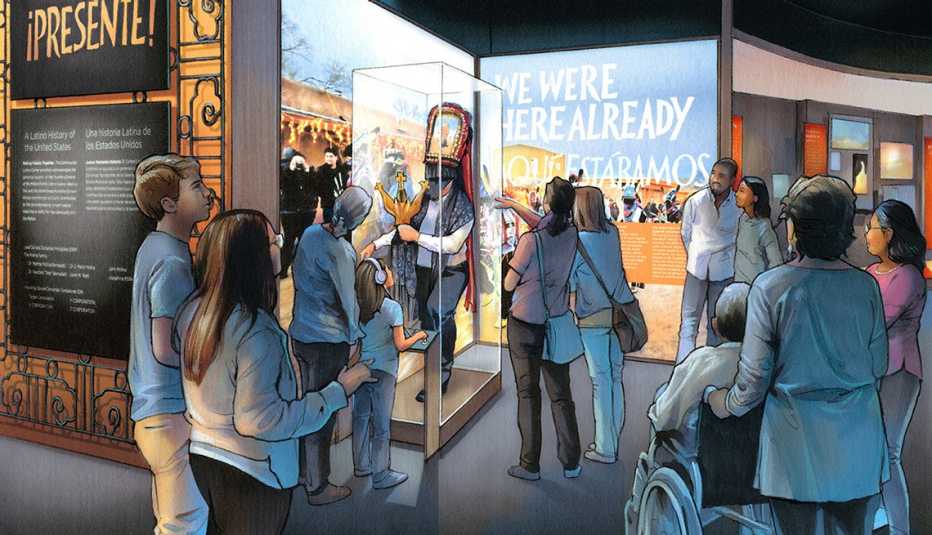AARP Hearing Center
Supporters of a museum on the National Mall in Washington, D.C., that focuses on one of the fastest-growing ethnic groups in the United States are calling the enactment of an economic stimulus bill that includes money to jump-start a Latino museum a historic moment.
The legislation, which includes $35 million this fiscal year to start the process and continue it for years to come, was passed last week as part of a $2.3 trillion omnibus spending bill and signed into law Sunday. The national museum will be part of the Smithsonian and center on the country’s 60.6 million Hispanics — plus the 3.2 million Hispanic residents of Puerto Rico.
“The passage of this bill caps off a decades-long effort to create an institution that would celebrate and commemorate the over 500 years of Latino contributions to the building, shaping and defending of America,” says Danny Vargas, chairman of the Friends of the National Museum of the American Latino. “We celebrate this historic moment with the countless individuals who have worked so hard over the years to make this happen and our innumerous supporters all over the country.” Yvette Peña, AARP’s vice president of multicultural leadership, is a board member of the group.
Also included in the massive spending bill is the creation of a Smithsonian Women’s History Museum and $900 billion in economic stimulus, needed because of the coronavirus pandemic.
The Latino museum had been in the works for several years, largely in fits and starts. A 1994 report from the Smithsonian Institution Task Force on Latinos concluded that the Smithsonian, the largest museum complex in the world, displayed a “pattern of willful neglect” toward the Latino population in the United States. A direct result of that report was the creation of the Smithsonian Latino Center, which helps design exhibits within existing museums.
The idea to create a museum focusing on Hispanics, who surpassed Blacks to become the nation’s largest minority group in 2003, had been floated for some time but gained momentum after that task force report. Legislation was introduced, including a bipartisan effort by then-Reps. Ileana Ros-Lehtinen (R-Fla.) and Xavier Becerra (D-Calif.), but it went nowhere.
Senate bill was at a standstill
“For many years, many Americans — Latino and otherwise — believed that the mosaic portrayed in Washington’s museums was missing a few tiles,” Becerra, now California’s attorney general and President-elect Joe Biden’s nominee to lead the U.S. Department of Health and Human Services, told a House committee in 2004.
A commission was created 12 years ago to look into establishing a museum, and supporters continued to push for the idea, including having several fundraisers and enlisting the aid of prominent Hispanics such as artists Rita Moreno and Chita Rivera. The effort gained steam in July when the House approved by voice vote a bill sponsored by Rep. José Serrano (D-N.Y.), himself a native of Puerto Rico.
After this year’s House vote, the legislation went to the Senate where it continued to enjoy bipartisan support until Sen. Mike Lee (R-Utah) blocked a scheduled vote. Supporters of the museum effort in the Senate, including New Jersey Democrat Robert Menendez and Texas Republican John Cornyn, then added it to the spending bill.


































































